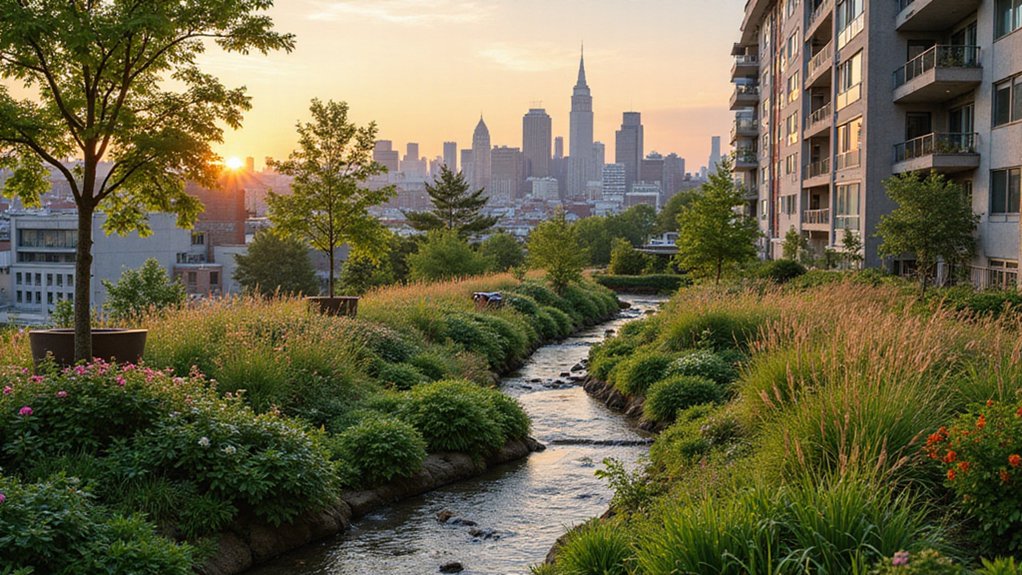Urban green spaces provide critical health benefits, reducing psychiatric disorders by 55% and improving mortality rates. Trees and plants capture carbon, filter pollutants, and create cooler areas in cities. Green infrastructure also manages water better than traditional systems while often costing less. Many communities lack equal access to these spaces. This growing “infrastructure transformation” tackles climate challenges while supporting public health. The complete picture reveals even more compelling reasons for urban nature.
As cities continue to expand worldwide, urban planners are discovering that incorporating nature isn’t just aesthetically pleasing—it’s critical for public health. Recent studies show that people living near green spaces have a 55% lower chance of developing psychiatric disorders. These natural areas provide measurable benefits for mortality rates and birth outcomes.
Urban green spaces are proving to be powerful tools in the fight against climate change. Trees and plants capture carbon, filter air pollutants, and create cooler microclimates. This cooling effect is essential as cities face rising temperatures, offering shade and relief during heat waves. Like geothermal energy systems, urban green spaces operate with consistent reliability regardless of external weather conditions.
The economic advantages of urban greening are becoming clearer. Green infrastructure reduces energy costs for cooling buildings and delivers quantifiable health benefits that translate to economic savings. California’s Climate Investment program now calculates these ecosystem service benefits when funding urban greening projects. Children exposed to these environments develop stronger cognitive abilities and longer attention spans compared to those with limited access to nature.
Water management is another benefit of city nature. Green spaces capture and filter stormwater, reducing runoff and improving water quality. This natural infrastructure often costs less than traditional engineering solutions while providing multiple additional benefits.
Not all communities have equal access to these benefits. Studies reveal inequities in urban greenspace distribution, with vulnerable communities often having less access. Future planning needs to address these disparities to guarantee all city residents receive the health advantages nature provides.
Beyond physical health, green spaces foster community well-being. They create gathering places that promote social contact and interaction among city residents. This social connection is crucial for mental health in increasingly dense urban environments. Quality improvements in disadvantaged areas are essential to encourage usage by marginalized communities who are typically underserved by green infrastructure.
As cities face growing challenges from climate change and population growth, green infrastructure offers a multi-benefit solution. Urban nature isn’t a luxury—it’s critical infrastructure that supports physical health, mental well-being, environmental resilience, and economic stability. The evidence is clear: investing in nature means investing in healthier, more equitable, and more resilient cities.
References
- https://www.epa.gov/green-infrastructure/benefits-green-infrastructure
- https://earth.org/data_visualization/data-proves-the-health-benefits-of-green-spaces/
- https://www.eea.europa.eu/publications/who-benefits-from-nature-in
- https://www.who.int/europe/publications/i/item/WHO-EURO-2023-7508-47275-69347
- https://ww2.arb.ca.gov/resources/documents/quantifying-health-benefits-ecosystem-service-benefits-and-other-impacts








